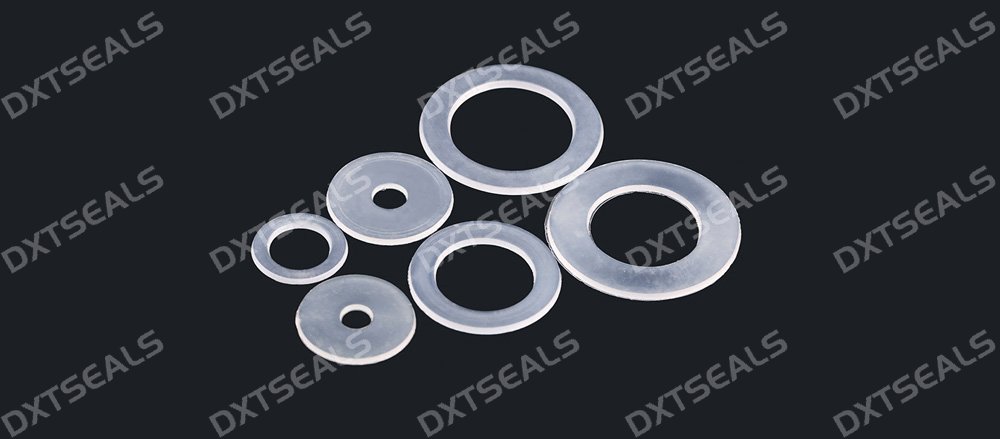
Rubber gaskets are essential components in many industrial and mechanical systems, known for their excellent sealing and vibration-dampening properties. Their elasticity is a standout feature, enabling them to absorb shocks and reduce vibration effectively. This article delves into the elastic characteristics of rubber gaskets and their applications in environments where vibration resistance is critical.
What Makes Rubber Gaskets Elastic?
The elasticity of rubber gaskets stems from the unique molecular structure of rubber materials. This structure allows rubber to stretch under stress and return to its original shape once the stress is removed. Key factors influencing elasticity include:
1. Material Composition
Rubber gaskets are made from various elastomers, including:
- Natural Rubber (NR): Known for its high elasticity and excellent tensile strength.
- Nitrile Rubber (NBR): Provides elasticity along with resistance to oil and chemicals.
- Silicone Rubber: Offers flexibility and elasticity over a wide temperature range.
- EPDM Rubber: Combines elasticity with resistance to weathering and UV exposure.
2. Cross-Linking of Polymers
During the vulcanization process, rubber molecules form cross-links, enhancing elasticity and allowing the gasket to maintain its shape even under repeated compression.
3. Temperature Resistance
The elasticity of rubber gaskets can vary with temperature. Materials like silicone and EPDM remain flexible in extreme temperatures, making them ideal for harsh environments.
Elastic Advantages of Rubber Gaskets in Vibration Environments
1. Vibration Absorption
Rubber gaskets are highly effective in absorbing vibrations, minimizing noise and preventing wear and tear in mechanical systems.
2. Shock Resistance
The elasticity of rubber enables gaskets to act as shock absorbers, protecting equipment from sudden impacts or mechanical stress.
3. Long-Term Durability
High-quality rubber gaskets maintain their elastic properties over time, ensuring consistent performance in dynamic environments.
4. Sealing Under Dynamic Loads
In vibrating systems, rubber gaskets provide a reliable seal even when subjected to constant movement, preventing leaks and ensuring system integrity.
Applications of Rubber Gaskets in Vibration Environments
1. Automotive Industry
Rubber gaskets are widely used in automobiles to dampen vibrations from engines and suspension systems. Applications include:
- Engine Mounts: Reducing engine vibrations transmitted to the vehicle body.
- Exhaust Systems: Providing flexible seals in high-temperature and vibrating environments.
2. Industrial Machinery
In factories and heavy equipment, rubber gaskets reduce vibrations in rotating or reciprocating machinery, ensuring smoother operation and longer equipment lifespan.
3. Aerospace Sector
The aerospace industry relies on rubber gaskets to manage vibrations in aircraft components, improving passenger comfort and equipment reliability.
4. Electronics
Rubber gaskets are used in electronic enclosures to dampen vibrations that could damage sensitive components.
5. Construction Equipment
From compressors to hydraulic systems, rubber gaskets play a critical role in reducing vibration-related damage in construction tools and equipment.
Choosing the Right Rubber Gasket for Vibration Applications
When selecting a rubber gasket for vibration environments, consider the following:
1. Material Suitability
Choose a material that balances elasticity with resistance to environmental factors such as temperature, chemicals, and UV exposure.
2. Compression Set Resistance
Ensure the gasket can withstand repeated compression without losing its elasticity.
3. Design and Dimensions
A well-designed gasket with appropriate dimensions ensures optimal vibration dampening and sealing performance.
4. Customization Options
For specialized applications, custom rubber gaskets can be manufactured to meet unique vibration and sealing requirements.
Maintenance Tips for Rubber Gaskets in Vibration Environments
To maximize the lifespan and performance of rubber gaskets:
- Regularly inspect for signs of wear, such as cracks or loss of elasticity.
- Ensure proper installation to prevent over-compression or misalignment.
- Replace gaskets when necessary to maintain system integrity.
Conclusion
The elastic characteristics of rubber gaskets make them indispensable in vibration-prone environments across various industries. Their ability to absorb shocks, reduce vibrations, and maintain reliable seals under dynamic conditions ensures the smooth operation of mechanical systems.
By choosing the right material and design for specific applications, businesses can leverage the full potential of rubber gaskets, enhancing performance and durability in challenging environments. For customized solutions, manufacturers offer a range of options tailored to meet the most demanding operational requirements.
